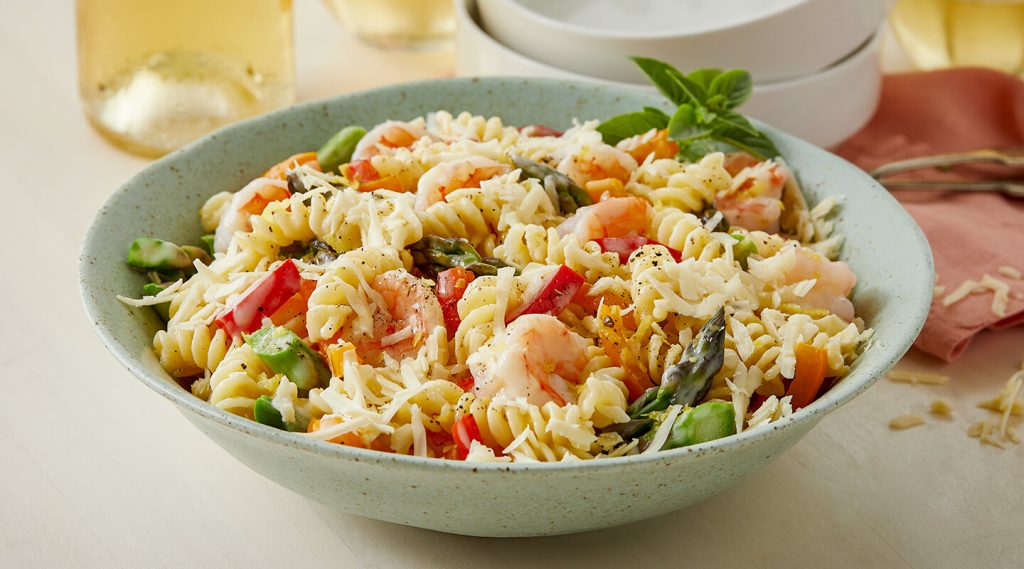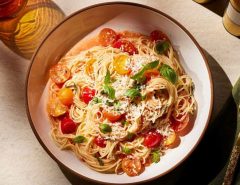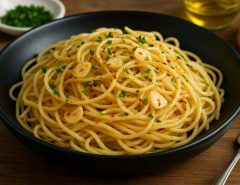Pasta primavera is a classic dish that’s been around for decades, but it wasn’t always as simple as what we see today. Pasta primavera is often thought of as a healthy and low-calorie option for any meal of the day thanks to its fresh ingredients and its incredibly versatile, too! In this post, we’ll take a look at where pasta primavera originated and how it has evolved over time. We’ll also show you how to make this delicious dish at home.
What is pasta primavera?
Pasta primavera is a dish consisting of penne or fusilli pasta and vegetables, usually served with a cream sauce. Usually, the vegetables are broccoli, peas, carrots, and zucchini. Pasta primavera is an easy dish to make at home for a weeknight dinner. It only takes about half an hour from start to finish!
Where did this dish originate?
Pasta primavera, which means “spring pasta” in Italian, was invented in the Piedmont region of northwestern Italy. The earliest known recipes for pasta primavera appeared in the late 19th century cookbooks of Vincenzo Corrado and Augusto Contaldo.
Piedmont is known for its hearty food that reflects the harsh windy winters and rainy springs it faces each year. It’s also known for its excellent alpine cheese, bresaola (air-cured beef), fruit jams and wines. Pastas from this region tend to be lighter with less sauce than other pastas from different regions of Italy because they are cooked in only light sauces or drizzled with some oil after cooking instead of being heavily sauced before serving them on your plate like you might see in Southern Italy or Sicily where they have much hotter climates than up north where most people prefer simpler ingredients over complex ones because they don’t have access to as many exotic spices like vanilla bean extract or fresh basil during their colder seasons when fresh foods aren’t available year round (except maybe at farmers markets).
How has pasta primavera evolved over time?
Pasta primavera, or “spring pasta” in Italian, has evolved over time from being a simple dish with just pasta, garlic and olive oil to more complex recipes featuring more vegetables and meat. The earliest recipes for this dish were published in the 1960s as an addition to menus at Italian restaurants.
The original recipe was a simple combination of spaghetti noodles tossed with olive oil, minced garlic cloves and grated Parmesan cheese. But over time it began to include additional ingredients such as peas and carrots or tomato sauce. In addition, the types of noodle used changed from spaghetti or linguine to fettuccine or penne noodles due to increased popularity among consumers who prefer different styles of cooking than how they were originally created (meaning they want something else altogether).
How do you make pasta primavera?
To make pasta primavera, you’ll first want to cook your pasta according to package instructions. Next, use a large pot and fill it with water. Place the pot over high heat on your stovetop and bring the water to a boil. While this is happening, get out another large sauté pan (or wok) and put it on medium-high heat so that it can also come up to temperature while you wait for your water to boil.
Once your water is boiling, add salt (about 2 tablespoons per gallon of water) and then add in your pasta—enough so that there’s enough room left in the pot for them all! The time will vary depending on what kind of pasta you’re using but generally speaking they should be cooked al dente (with some bite left in them). When they’re finished cooking, drain them through a colander into a separate bowl or sink—don’t rinse them with cold water yet! You’ll want those hot noodles for later!
Now grab that second sauté pan again; we’ve got more vegetables to cook before adding anything else into our sauce mixture. Add some vegetable oil into its base as well as any seasonings like garlic powder or dried herbs like parsley if desired along with broccoli florets cut into small pieces about 1/2″ long by 1/4″ wide when grouped together tightly at most! Once heated throughly—but not burning yet—toss those babies around until slightly browned on all sides including topside bottoms because we’ve got some deliciousness going down here soon enough (they won’t take very long at all).
Conclusion
As we’ve discussed in this article, there’s a lot to know about pasta primavera and how it has evolved over time. It’s easy to make at home with this recipe and you can enjoy the delicious flavors of spring any time of year!






Leave a Reply